
Dinner may seem ruined when a lovely Alfredo sauce or white sauce suddenly separates into a mass of spongy bits and brackish liquid. High heat most frequently causes this catastrophe, known as curdling. When cooked at an overly high temperature, the proteins in the sauce clump together, forming a solid mass and separating from the liquid. To prevent this, keep the heat low, regardless of the type of sauce you're making.
Scrambled Eggs
Sauces made with egg yolks, such as creme anglaise, may curdle if the eggs are heated too quickly or too much. When egg yolks are gently heated, the proteins unwind and join together to thicken the sauce. Under high heat, though, they lose their shape and form clumps -- essentially scrambled eggs. To prevent these sauces from curdling, cook them over a double boiler and don't allow them to boil. Insert a thermometer in the sauce, and heat the sauce to at least 160 degrees Fahrenheit but no more than 180 F. In some cases, a recipe may call for tempering the sauce instead. To do this, heat milk or cream in a saucepan until it simmers but does not boil. Whisk the egg yolks in a bowl. Pour some of the heated liquid in a slow and steady stream into the egg yolks, whisking constantly. The hot liquid warms the eggs slowly without scrambling them. Pour the mixture back into the saucepan and heat it until the sauce thickens and coats the spoon, stirring constantly.
Curds and Whey
Dairy products are notorious for curdling if heated to high temperatures, and the lower the fat content, the more likely the sauce is to curdle. You can typically boil heavy cream without worry, but low-fat milk is quite temperamental. Even half and half can cause problems. When heated to boiling, the milk fats clump together and separate from the liquid. Although eating the sauce won't hurt you, a curdled sauce is far from appetizing. To prevent curdling in dairy-based sauces, heat them over medium heat and avoid boiling them. You can also add a bit of cornstarch to the cold milk. The starch helps stabilize the milk so that the sauce is less likely to curdle.
A Bit of Vinegar
Acidic ingredients, such as vinegar, lemon juice and even wine, can cause a dairy-based sauce to curdle. Acid causes the proteins in the dairy product to coagulate and separate, so you're left with a clumpy mess. If you're making a substitute for buttermilk, you may want the milk to separate and clump. Otherwise, avoid adding acidic ingredients to a dairy-based sauce or add the ingredient at the end of the cooking time.
Fix the Sauce
Fixing a curdled egg-based sauce is fairly simple. Pour it through a sieve or whisk it vigorously to break down the bits of scrambled eggs. Unless the sauce is completely curdled, it should be fine. Fixing a dairy-based sauce is a bit trickier. First, heat a small amount of cream or milk in a saucepan. Slowly whisk in the broken sauce and heat it gently. The fat in the milk tempers the sauce and usually restores it. Placing it over an ice bath or adding an ice cube can also fix a curdled sauce. Combine cornstarch with a bit of cold water to make a slurry and stir it into the broken sauce. If the sauce remains broken, though, there's nothing to do but start over.
Related Articles

Why Does Milk Curdle When Baking a ...

Why Does Milk Curdle When it Is Mixed ...
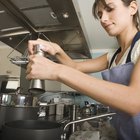
What Can I Use to Thicken a Cream Sauce?
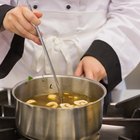
How to Skim Grease in Sauce

Can You Use Half and Half to Replace ...

Can You Refreeze Cooked Spaghetti Sauce ...
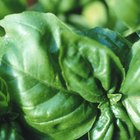
How to Make & Freeze Homemade Spaghetti ...
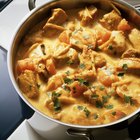
Cooking Yogurt Without Curdling It

How to Thicken Sauce With Powdered ...
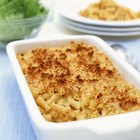
How to Prevent Cheese Separation in ...
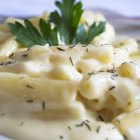
How to Make Mac & Cheese Using Alfredo ...
How Many Calories Are in Peanut Sauce?

How to Keep Scalloped Potatoes From ...

Can I Use Pancake Mix to Thicken Sauce?

What Is Ratio for Cornstarch & Water to ...

How to Keep Custard Sauce From Curdling

Can You Bake Greek Yogurt?
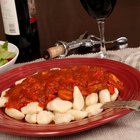
How to Freeze Marinara Sauces

How Long Can You Refrigerate Nacho ...

What Can Be Used as a Substitute for ...
References
Writer Bio
Julie Christensen is a food writer, caterer, and mom-chef. She's the creator of MarmaladeMom.org, dedicated to family fun and delicious food, and released a book titled "More Than Pot Roast: Fast, Fresh Slow Cooker Recipes."
Photo Credits
ITStock Free/Polka Dot/Getty Images